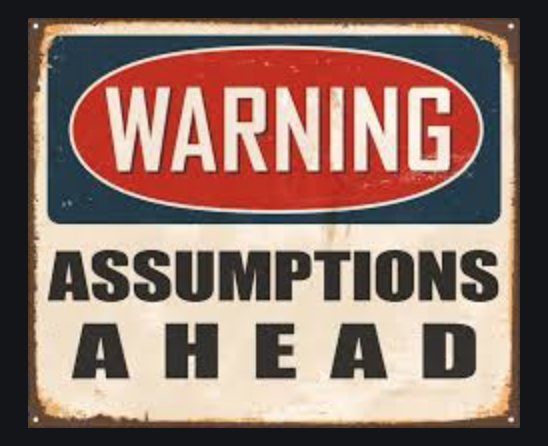As some schools attempt to move away from a highly metrics-only evaluation of applicants to a more holistic assessment, students are challenged to provide a clear, concise, and cogent view of their character and academic potential in different ways. How can students provide this evidence—and where can it be presented most effectively?
The main criteria for admissions evaluations still focuses on weighted GPA and evidence for being a curious, self-driven learner who is also inquisitive about the world; however, a holistic review also looks for the candidate who can authentically reflect, has taken an active participation in multiple communities, sought additional or unique experiences, and is well-rounded in their perspectives, interests, and pursuits.
A student’s weighted GPA is paramount, and thoughtful recommendations are very significant, as are well written and supported essays. But school representatives often note that two common attributes of the strongest and most successful applications are consistency and uniqueness. Does the entire application appear to support the same person? Are strong attributes and characteristics consistently highlighted, and do examples from essays, recommendations, and extracurricular activities correlate and support each another? And, what separates this student from all the other highly qualified students and the sea of sameness?
Providing evidence to address these questions will make an application more powerful and effective.
Some schools fervently promote the use of a holistic view in application evaluations, but what does that mean, and how can students effectively provide the information representatives want to see? How can students create consistency and provide evidence that evaluators are looking for in an application?
There are three main places that an applicate can highlight and support qualities with examples and qualifications:
- Essays
- Recommendations
- The Activity List
These three sections offer extraordinary opportunities. When all three components resonate the same message and story, it is a force multiplier and is more powerful than the sum of the individual statement. Again, consistency is essential and very powerful in holistic evaluations.
Highlighting the same information multiple times, in different ways, supported by different sources is much more effective than sharing it once. Research at Yale University shows that multiple, multifaceted presentations of information will help to fill in information gaps, increases understanding, and promotes empathy. Marketing leverages a communications suggestion that a person needs to hear the same message seven times before they really pay attention to it. While a college applicant may not be able to provide seven points of reference in their application, two or three repetitions from different perspectives will dramatically influence the probability that a characteristic, trait, or behavior associated with college readiness will be remembered by the evaluator.
Consistency is critical. A similar and supporting statement outlined in multiple ways and provided from diverse sources is invaluable. Consistent statements that help support and provided evidence of a student’s character and behaviors are invaluable. While a student can provide relevant examples for their “good leadership skills” a recommending teacher can provide specific examples they have personally observed when the applicant practices and employed “good leadership skills.” In addition, the Activities List is another place to provide supporting evidence of statements. It is much more powerful and effective to “show” (through supporting examples) rather than just “tell” the evaluator that “I am a leader.”
How do you increase consistency over the breadth of your application? Intentionally, thoughtfully, and strategically align your essays, recommendations, and school list information so they resonate with each other. Be intentional and align your messaging and examples in all areas.
Essays –
Schools look for many things—some you provide on purpose, some you unknowingly provide—in your essay. Your essay theme, the vocabulary you use, tone, examples, references, maturity, and perception of yourself, are all clearly represented in your essays. Take the time to be intentional about what you write and how you write it. This includes providing information that you want to stress to evaluators, then highlight these same things in your Activities List and ask teachers to note them in their recommendations by providing a thoughtful and intentional Brag Sheet. (see below)
Choose those personal character traits and how you perceive yourself, other people, and the world around you very intentionally. Your essay theme is an important vehicle, but the theme is only a vehicle. Identify what you want the evaluator to know about you and then build a story using a theme that can effectively convey that information, thoughtfully and purposefully.
Recommendations –
Schools look for supporting examples and substantive corroboration of your character through the recommendations your teachers provide. If their recommendations mirror and reinforce your stories and information (essays and activities list) evaluators will be more likely to remember—and believe—those traits and behaviors. In addition, teacher recommendations provide another perspective of your college readiness, potential, and authenticity…especially if your recommenders have known you for multiple years and in different classes and/or social settings.
But how do teachers know what you are going to write about in your essay or list in your activities list?
YOU TELL THEM!
On our podcast, Anna Ren and I talk about the power of the Brag Sheet, and how to provide information for your recommenders to highlight. We outline and discuss four main ways your Brag Sheet can help you help your recommenders support you. Please know that teachers want to make the most of their time and be able to support you as effectively as possible. Help them, help you!
The information that you provide in your Brag Sheet will help teachers highlight, confirm, and provide a different and supporting perspective for information you outline in your essays and activities list. Be sure to provide teachers with a minimum of:
- Your Activities List –
- This provides specific and accurate information about how you spend your time and what kind of activities are most important to you. Teachers can use this as a guide to make specific references and provide current and accurate examples.
- Why you are going to college and What you want to learn/study –
- If a teacher can reference your specific intentions and mirror your statements in other parts of your application (usually essays), that will provide credence for your first-person statements about your academic, professional, and personal goals.
- Your character traits and strengths –
- This is not a time to be humble. What do you do well and what are those characteristics you will be highlighting in essays (leadership, tenacity, courage, curiosity) and are also represented and supported by your Activities List?
- What you would like teachers to stress –
- This is also not a place to be humble. Be very specific about information that will be highlighted in your essays and activities list. If appropriate, describe a specific event or experience you will be referencing in your essays that the teacher may/may not be aware of. Give your teachers a chance to make you shine and make the most of their time in writing an outstanding and powerful recommendation for you.
Choose your recommenders carefully. For example, many coaches are also teachers. A coach/teacher who can speak to your maturation and evolution as an athlete, student, and leader over four years is a golden opportunity for a powerful and effective recommendation letter. Think about those teachers who know you best and in as many settings as possible—including academics, sports, arts, and as an active part of your community.
If you have an opportunity to submit an additional recommendation, it is best to capitalize on that opportunity and ask for a recommendation from a third (non-academic) recommender. That person may be able to provide additional and important references and examples that will buoy statements about your character and academic/professional intentions. Having an external reference can greatly increase a holistic view of who you are and what makes you tick.
Activities List –
Some college representatives/evaluators openly acknowledge they like to read the activity list entries more than any other section of the application. Why? The activities list can say a lot about the applicant by how items are presented, the order activities are listed, what information is highlighted for specific activities, the breadth of curiosity and courage to try new things, which activities an applicant identifies as most important to them, and what they think colleges want to see and hear. Again, evaluators are gathering information about who you are and how you think as much as they are about what you have done.
Above all, take time to reflect and identify your greatest character strengths and specific examples that highlight those specific strengths, character traits, and behaviors. You only have 150 characters—make every character count.
Your list of activities also provides a timeline and evidence for how you have chosen to spend your time during high school. Evaluators can cross-reference the statements in your essays and recommendations to see if your statements are also supported by the activities you list and the amount of time you have devoted to each. Your list also provides evidence for the number of activities you have tried and how much time you have spent on each, as well as your role and responsibilities in those activities. Then they can examine your level of participation, the duration you have participated, and if you have actively pursued increasing roles of responsibility as a participant…or leader.
For example:
- Don’t just tell… “I am a leader”…but show
- “As a junior class ASB treasurer I gathered peers together to conduct three projects that raised over $10,000 for 5 local community organizations including X, Y, and Z.”
- Don’t just tell… “I am passionate about politics and civic engagement”…but show
- “During the past 4 political mid-term and two presidential cycles I have volunteered for 6 campaigns and have been placed in roles of greater responsibility including X, Y, and Z.”
- Don’t just tell… “Cross country runner”…but show
- “Varsity & JV runner; lead league in 9th/10th; recruited 19 new runners, current co-captain; 3rdat state championships (2021) & invited to 2022 Nike Nat’l XC Invitational”
As more schools are overwhelmed by applications, finding a way to separate yourself from “the sea of sameness” is becoming increasingly important in the application evaluations process. Take the time to look at your application components as an intentional, thoughtful, and cohesive singular statement. Create a powerful and effective holistic application by highlighting your unique character and experiences through different perspectives and evidence from multiple views and sources.










